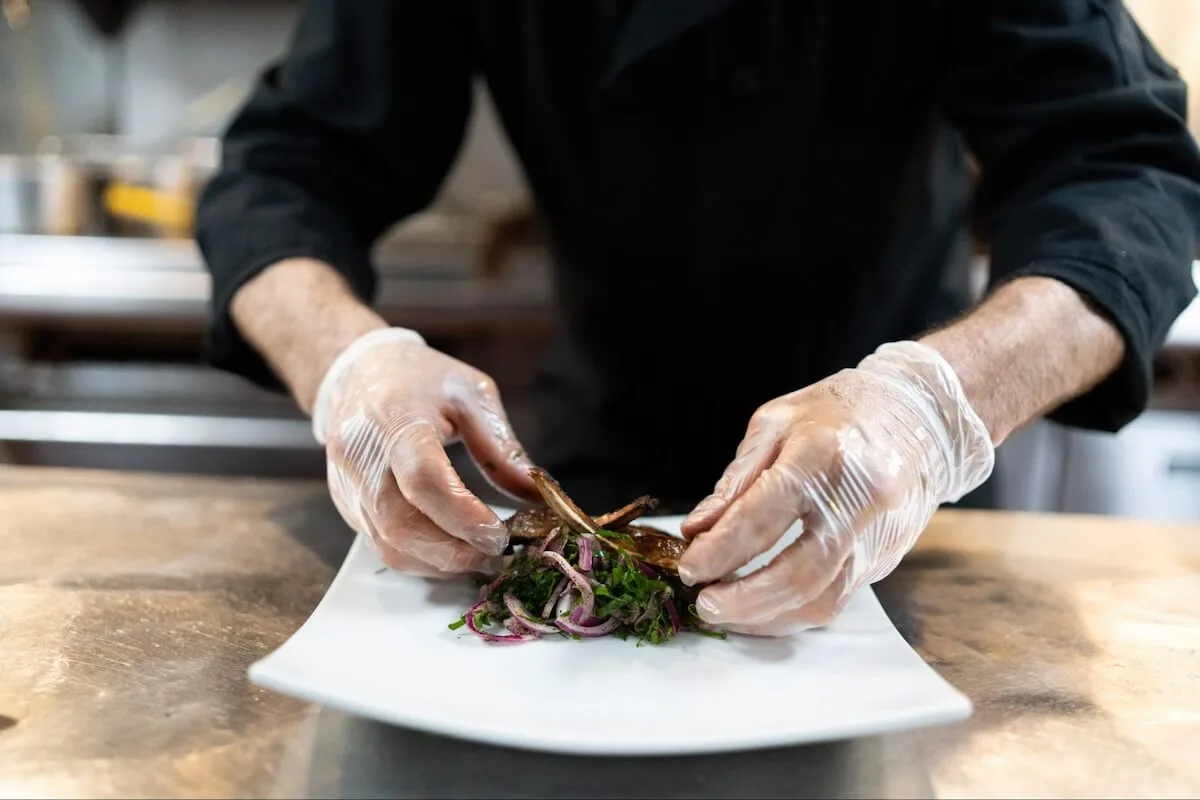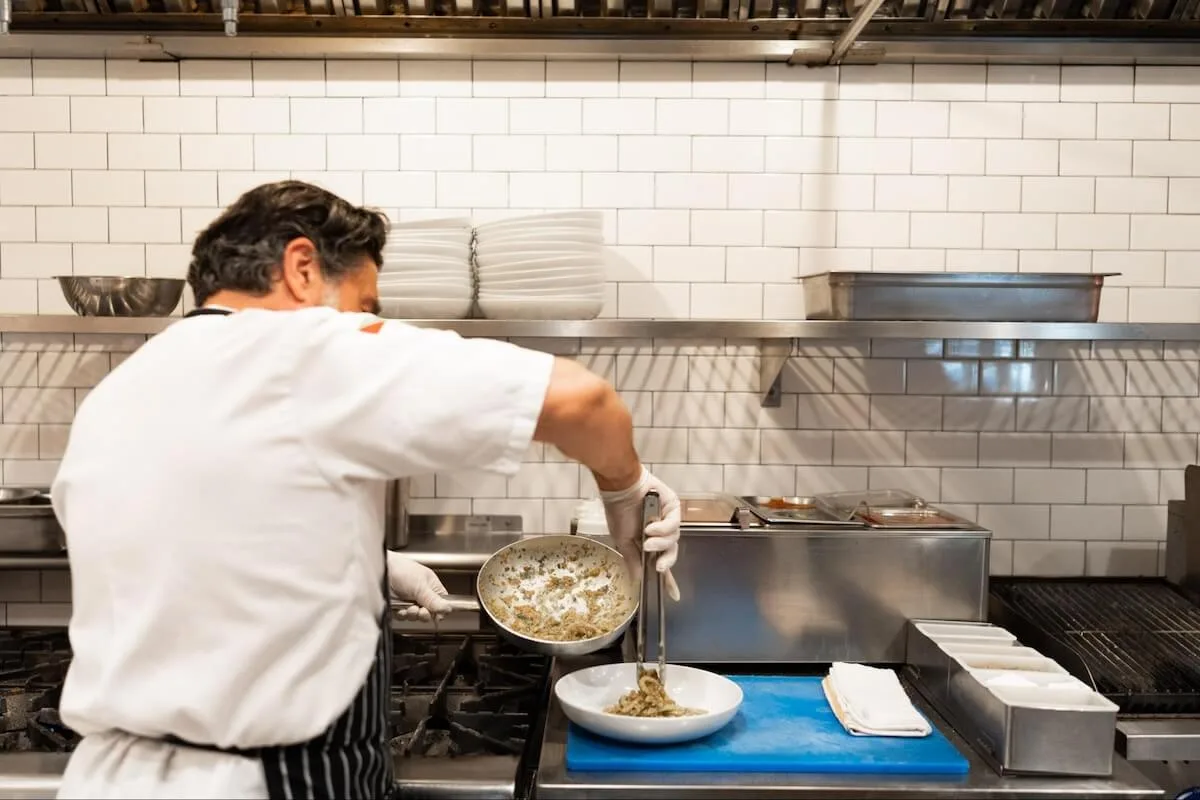7 ways to increase profit via food cost percentage
Your restaurant menu is the single most important piece of information customers have about you. Naturally, that includes the prices—which a restaurant owner should spend a fair bit of time considering. The most important step you can take toward making sure your menu items are priced appropriately is having a solid understanding of food cost percentage, a key benchmark.
Nailing your prices is one of the most important steps to success in the restaurant business. Not only does it help customers determine what to expect at your restaurant and whether to visit or not, it determines the amount you earn on each menu item.
Why food cost management matters

Knowing the costs of each dish can help in menu engineering and can make the difference between a favorable bottom line or financial loss. Because food prices can vary widely during the year and over the long haul, accurately managing food costs helps restaurateurs keep track of how much they spend on each part of each dish. Comparing sales data against your inventory management system can help determine what dishes are your stars, which ones aren’t worth the effort, and which ones can be improved.
Since a restaurant’s food costs fluctuate, you can control food costs by swapping out dishes during certain times of the year when prices spike. Serving in-season produce, for example, can lead to better prices at the wholesale level for you and higher profit margins than using imported food. Close inventory tracking can also help with menu creativity: When you have an oversupply of a certain item, you can use that to make specials using it rather than lose it to spoilage, which earns you nothing. Similarly, watching your food costs as they change during the year can keep you attuned to overall supply chain disruptions, which have certainly been on restaurateurs’ minds the last few years.
In short, keeping close track of your food cost is one of the most important aspects of restaurant accounting and often separates successful restaurants from unsuccessful ones. Optimizing your food costs helps prices fair for you and customers, gives you the opportunity to make accurate sales forecasting, and streamlines restaurant operations in the back-of-house.
Key food cost percentage factors

When calculating your food cost percentage, keep these two concepts in mind.
Ideal food cost vs. actual food cost
Like many things in life, what happens on paper isn’t what happens in the real world. In this case, your ideal food cost is what a meal’s ingredients should cost. Actual food costs are what those ingredients actually cost.
There are a number of reasons actual food costs can differ from ideal. Portion sizes, for example, could be off, leading to overserved customers and reduced profit. Food waste due to spoilage or spillage can be another leading cause of actual food costs being higher than ideal. Proper inventory management can help reduce this spoilage, especially if a kitchen is overordering supplies.
Ideal food costs are a good way to get an idea of what your menu prices should look like, but they may not represent actual food costs. Keeping actual food costs as close as possible to ideal food costs is one of the most important things a restaurateur can do to ensure profit margins remain healthy.
The cost x3 rule of thumb
Before we get too deep, let’s start with a number that’s fairly universal: The most common way to price restaurant food is to take the cost of ingredients in a dish and multiply that by three, rounding up to the nearest whole number. Multiplying by three gives you an average food cost percentage of 33%, which generally provides enough profit to cover labor costs, overhead, and other expenses, while leaving some room for profitability.
Of course, there are many ways to elaborate on that general rule of thumb—which is what we’ll do here.
How to calculate food cost percentage

The food cost percentage formula is fairly straightforward. It may help to first determine the cost of goods sold (COGS).
1) Beginning inventory + purchases – ending inventory = COGS
Divide your COGS by your total food sales and you’ll get the actual food cost across your inventory.
Here’s an example:
Sam’s Fried Chicken (SFC) started with $7,000 worth of chicken and other ingredients, and purchased $3,000 more over the course of a month, leading to a total of $10,000. Their ending inventory value was $3,000. So, their COGS was $7,000.
2) COGS ÷ total food sales = actual food cost
For example, let’s say the shop had total sales of $20,000 in a month. $7,000 ÷ $20,000 leads to around 0.286. Multiply that by 100, and you get your actual food cost: 28.6%.
3) Food cost ÷ food sales = ideal food cost
If a fried chicken meal at SFC costs $2.50 in ingredients and the meal sells for $10, the ideal food cost is 25% (2.5 ÷ 10 = 0.25).
So in this example, the ideal food cost to break even would be 25%, but the current food cost is higher at 28.6%. The owner of Sam’s Fried Chicken needs to make some decisions about whether to raise prices or find cheaper ingredients.
Calculating food cost can help determine if your menu pricing is accurate and is helping your restaurant be profitable. Keeping a close watch on an inventory also has a side effect of improved food supply management, which gives a restaurateur a good overall idea of how much product they’re using and how much they need to order to better manage inventory costs and hit their target food cost.
7 strategies to optimize your prices

Each meal at your restaurant will have a food cost percentage breakdown. Restaurants can use these metrics to determine which food items are the most profitable and which are less so.
For example, a side of mashed potatoes will likely always be cheaper than a side of asparagus, and chicken breast will likely always be cheaper than beef tenderloin. That does not mean that a restaurant should focus exclusively on higher profit food items, nor should a restaurant use the same 3x formula for every single dish.
So, what should you do to manage your food cost percentage and increase profitability? Here are seven helpful ideas.
1. Account for strategic loss leaders
Loss leaders are items in any business—restaurants included—that don’t earn a business much money on their own. The goal of a loss leader is to get customers in the door in the hopes that they’ll bring friends, buy more than just that one item, or become a regular customer.
I can point to an example from my own experience running a new pub that needed to gain regular customers. Our pork ribs were beginning to garner local popularity, so I marketed them at a lower price than competitors did. Because we had other more profitable menu items—including cocktails—my goal was to get attention with a low price. Our overall food cost on the pork ribs, including sides, was around 50-60% of the dish, with variables because we were not particularly careful with our portion sizes (which customers appreciated).
The plan worked very well: Customers were drawn in by the low prices on the ribs, and many brought friends who ordered something else more profitable for the pub, like grilled chicken or tacos. Despite a higher food (or ingredient) cost, we quickly became a profitable restaurant due to overall high dollar sales and frequently returning customers.
We could afford to be a bit loosey-goosey with pricing because we were a small establishment with low rent. The higher your rent and prime cost, the more closely you’ll need to pay attention to your food cost percentage.
The point is this: While the 3x cost of food pricing idea is generally acceptable for food service, it’s not any rule that’s written in stone. Getting creative about pricing can help attract customers and increase the overall dollar value of your sales.
2. Repurpose ingredients for sales and specials
Any restaurant-goer is familiar with the concept of restaurant specials, which are effectively a combination of discounts and unique items. When done right, specials can both attract customers and help you work with the value of your inventory to prevent waste and spoilage.
A smart move is to find a way to repurpose existing inventory items to create new dishes that are seasonally appropriate, cost effective, and—above all—tasty. An oversupply of sausage and chicken could lead to a gumbo special, for example, that will help sell inventory before it’s lost to spoilage. Specials can be used as loss leaders to get customers in the door as well as move an overabundance of supply. Even if your food cost is as high as 50%, it’s far better than the 0% that would come from losing the food to spoilage.
Specials don’t only have to come from oversupply—they can also come from seasonally available food. Buying fresh salmon during salmon season, for example, can lead to all sorts of menu items that result in far more delicious dishes than frozen salmon. Even people with untrained taste buds will taste the difference, even if they don’t know why.
3. Keep food fresh by selling out
In my experience in the restaurant industry, two things helped manage an inventory and keep food costs down. The first was keeping a menu small. The second was not being afraid to sell out of items on a given day.
Ideally, a restaurant will want to sell out as much as possible. This keeps the inventory fresh, and fresh food almost always tastes better. Selling out also indicates that your restaurant is in demand, and word-of-mouth may leak out that your restaurant is a hot commodity. It also helps restaurants use a first-in, first-out (FIFO) inventory management method, in which inventory gets used in the same order it was purchased in, i.e., older goods get sold first. Relying on a FIFO system helps with food cost management by reducing the amount of food wasted by ensuring it gets used before it expires.
I strongly caution restaurant owners about going down the dark path of frozen food. Yes, it’s a safe option and may help reduce overall food cost. But it’s also the route to mediocre food, which is not one I would recommend. A small menu of 10 excellent items is far superior to a large menu of 70 mediocre items. Once a menu starts expanding to accommodate new ideas, the draw of the freezer becomes more and more appealing. Avoid it as much as possible.
4. Explore menu engineering to encourage high-profit items
Menu engineering is an excellent way to curb restaurant costs and operating expenses. Your menu design can have a large effect on customer behavior. High-profit, high-popularity items should go towards the top right or top center. Customers naturally gravitate towards those parts of the page when they’re reading the menu, so put the dishes you want to sell the most in those areas.
Menu items with a high total food cost on one item can further be offset by an accompaniment of low-cost-but-tasty sides. A classic example here is steak and potatoes. The steak? High-cost. The potatoes? Low-cost. But if customers walk away full and satisfied, they won’t consider how much their potatoes cost you—as long as they taste good.
Brunch can especially be a restaurant’s best friend. Eggs are cheap, as are French toast and pancakes. Really, so is a Bellini, especially when you consider the profit. Adding brunch to your menu can be an excellent way to increase profits and encourage diners to get there early.
5. Work on portion control

Managing portions is one of the best overall ways to improve food cost control, especially if you have a high customer turnover. Admittedly, this is something I was loose on when I had my pub. But with each extra ounce of a recipe costing a restaurant more, keeping close watch on your portions can help save significant money in the long run.
For this reason, it’s wise to be exact on portions of more expensive items like meat or vegetables and looser on cheaper items like classic staple-crop-derived foods like bread, rice, pasta, or potatoes. Encouraging exactness in portion size doesn’t mean making meager meals: Customers should always leave full and satisfied. However, there’s a fine balance to be made in maintaining portion costs and satisfying customers. If your portion costs aren’t keeping up with increasing wholesale food prices, it’s better to re-price menu items rather than shrink portions—unless you notice lots of customers leaving with leftovers.
6. Keep costs down by buying local and fresh
Fresh, locally sourced food usually tastes better and is cheaper. Shocking, we know! Relying on seasonal produce is an excellent way to keep your food costs down while keeping tastes up. This can look like creating a seasonal menu that rotates depending on what’s available during that period of time or a prix fixe menu that helps nudge customers towards new and seasonal dishes.
No matter what type of food you serve, you’ll experience seasonal cost variations in your menu items if you’re sourcing locally. Consider that a good thing: It helps you determine just what should and what shouldn’t be on your menu. The lower the food cost, the higher your total revenue. Grilled corn and chilled watermelon in the summer? Definitely a winner—cheap and makes people happy. Butternut squash soup or pumpkin pie in the fall? Same story.
7. Dive into data for streamlined food cost management
Good restaurant management software will provide you with all sorts of data based on long-term sales trends. What used to be a time-consuming process during a quarterly or yearly review can be automated to help predict what you’ll need to purchase in the future and how much you can expect to sell based on trends. Combined with top-notch restaurant inventory management software, you’ll have the right tools at your disposal to make smart choices and keep your costs under control—and your customers happy.
Yelp Guest Manager helps restaurateurs keep track of sales data and pairs with a number of popular inventory management systems to keep restaurants on top of their game. With a fully customizable setup and a long-term onboarding manager to help you navigate the software’s learning curve, Guest Manager can help bring the big picture into focus without you having to wade through mountains of paper like in the ancient times.
BOH + FOH Excellence = Success

Nailing down your food cost percentage, pricing, and inventory management is a key part of making sure your restaurant thrives. When your menu is something everyone can be proud of, your staff can do what they do best—manage the waitlist, check guests in for reservations, talk about your dishes, and wait on tables.
Yelp Guest Manager is one heck of a tool when it comes to running your front of house. Customizable table management, point of sale (POS system) integrations, and helpful data are just the start.
Online reservations, check-ins, waitlists, and third-party integrations with delivery apps help get customers in the door. Restaurants that use Yelp Guest Manager and Yelp Ads experience up to a 17% monthly lift in diner bookings through Yelp.
If this sounds like the sort of thing you’re looking for, take Yelp for Restaurants for a test drive and see how it could help your business. We’ve loved the results our clients are getting so far, and we think you’ll love the results you get, too.